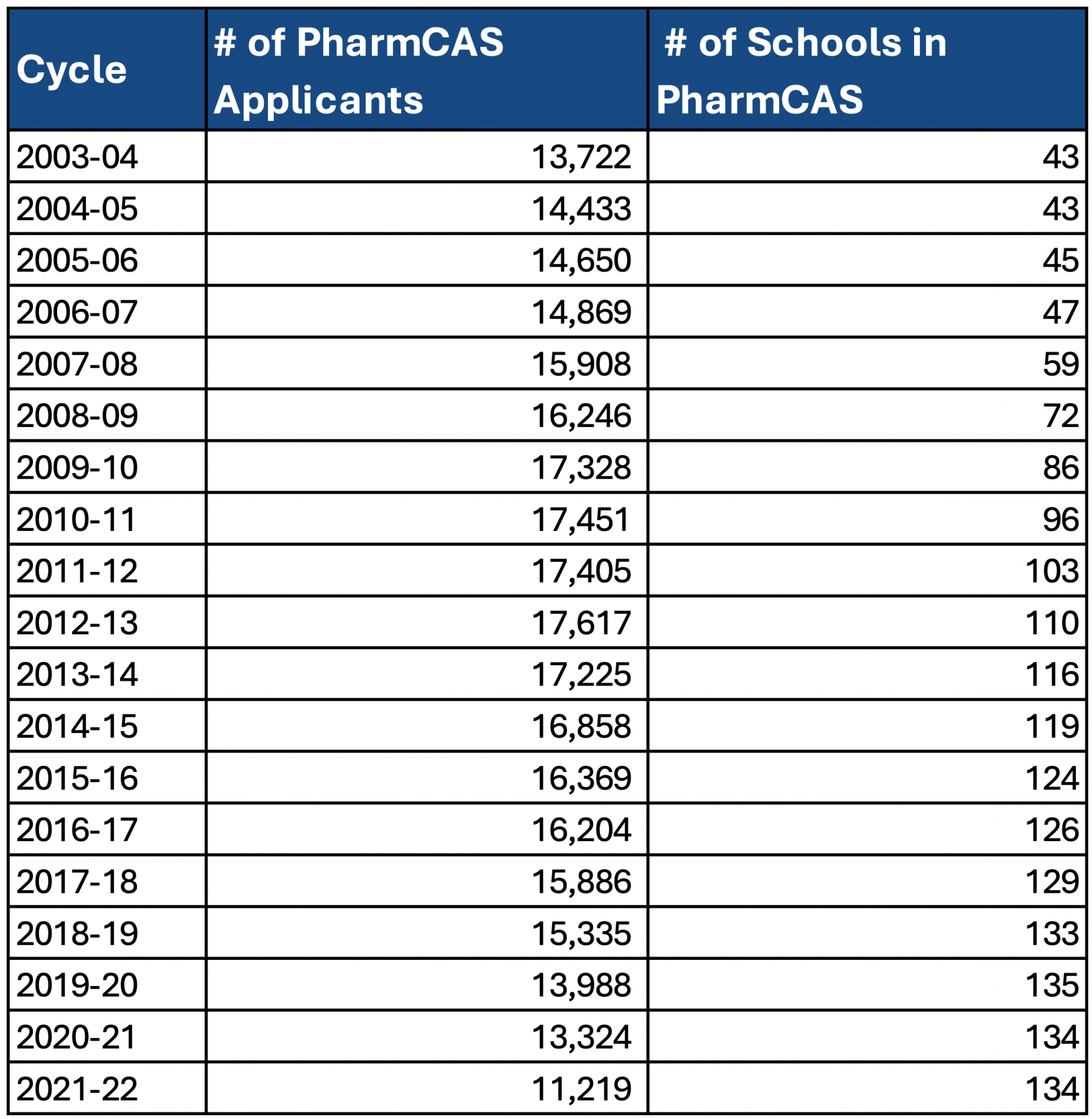NAPLEX TRENDS: Interpreting Pass Rates
The 2023 NABP NAPLEX pass rates reveal a concerning trend: first-time pass rates persisting in the 70th percentile.1 For pharmacy faculty, this poses a dilemma. While most entered academia driven by a passion for teaching and a desire to shape excellent pharmacists, the importance of test scores cannot be overstated. These scores not only gauge students' readiness for clinical practice but also significantly influence program recruitment. However, alongside this concern, there's a worrisome decline in the number of students taking the exam each year.
According to the 2023 NABP report, first attempt exam takers decreased by 17% from 2021 to 2023. This trend is mirrored in the AACP PharmCAS Participation, Applicant, and Application Trends (2004-2022) 2, indicating a significant drop in applicants over recent years. The proliferation of pharmacy schools, with numbers more than tripling in the last two decades, has resulted in more seats across programs but fewer applicants vying for them.


This decline in applicants presents a challenge for pharmacy programs, as tuition is typically the primary source of funds. Consequently, many programs are witnessing drops in enrollment, leading to reduced funding for faculty, facilities, and resources. To offset these financial strains, programs may lower admission standards, admitting less qualified students, further exacerbating the challenge of maintaining high NAPLEX scores. These downward trends underscore the critical importance of addressing challenges within the pharmacy profession.
Enhancing the appeal of pharmacy as a career requires concerted efforts beyond the purview of individual programs. Greater oversight by boards of pharmacy to improve work conditions, particularly in chain pharmacy environments, is essential. Additionally, a cohesive effort to showcase the profession's value and advocate for reimbursement for cognitive services is needed.
Challenges for Today's Learner
Modern pharmacy students face a unique set of challenges that differ from those encountered by their predecessors.
- The rapid, continuous expansion of information: the rate and volume of information, drugs, and demands continues to expand what pharmacy curriculum is expected to address and means each topic gets less time.
- Digital information availability: Learners are accustomed to being able to look up information on a device at any moment which inhibits the retention of detailed information that will be necessary for proper orientation to questions on a board exam.
- Education fatigue: Burn-out is very real and can hinder the motivation for preparation with many students preparing for the NAPLEX exam after eight years of continuous education.
- Application gap: Core drug class and disease state didactic teaching takes place in the P1 and P2 years at a rapid pace. The science of learning continually shows that putting knowledge into practice leads to learning that sticks. Many areas of information learned in P1 and P2 year may not have an opportunity to be used in practice until APPE rotations in the P4 year which decreases learning effectiveness.

Strategies for Pharmacy Programs
To address these issues and improve outcomes, pharmacy programs can implement various strategies. Providing resources tailored to the P3 and P4 curriculum, such as on-demand review lectures, enables students to reinforce core content while applying it to real-world scenarios. Identifying and rectifying learning gaps through early practice exams and individualized study plans is crucial for effective preparation. Additionally, incorporating exam-style questions throughout the curriculum helps students develop the necessary test-taking skills.
Programs that integrate NAPLEX preparation into their rotations, with graded coursework and clear milestones, are more successful in motivating students.
Guidance and accountability are paramount in ensuring students remain on track with their preparation. Programs that integrate NAPLEX preparation into their rotations, with graded coursework and clear milestones, are more successful in motivating students. Furthermore, providing resources for preceptors enhances the quality of the rotation experience, facilitating a "flipped classroom" model that fosters active learning.
In conclusion, adapting to the evolving landscape of the pharmacy profession is imperative for academia. By equipping students with the necessary resources, guidance, and support, programs can prepare them for clinical excellence and success on the NAPLEX exam. Collaboration between educators, industry stakeholders, and regulatory bodies is essential to address systemic challenges and elevate the pharmacy profession.
Sources:
(1) https://nabp.pharmacy/wp-content/uploads/NAPLEX-Pass-Rates-2023.pdf
(2) https://connect.aacp.org/discussion/pharmcas-applicant-data-for-2021-2022
resources for faculty and students
Are you a faculty member interested in learning more about High-Yield NAPLEX Review materials? Learn more here.
Are you a student ready to begin your prep? Get started early and excel in APPE rotations and on the NAPLEX Exam! Check out our courses here.
You may also like:


